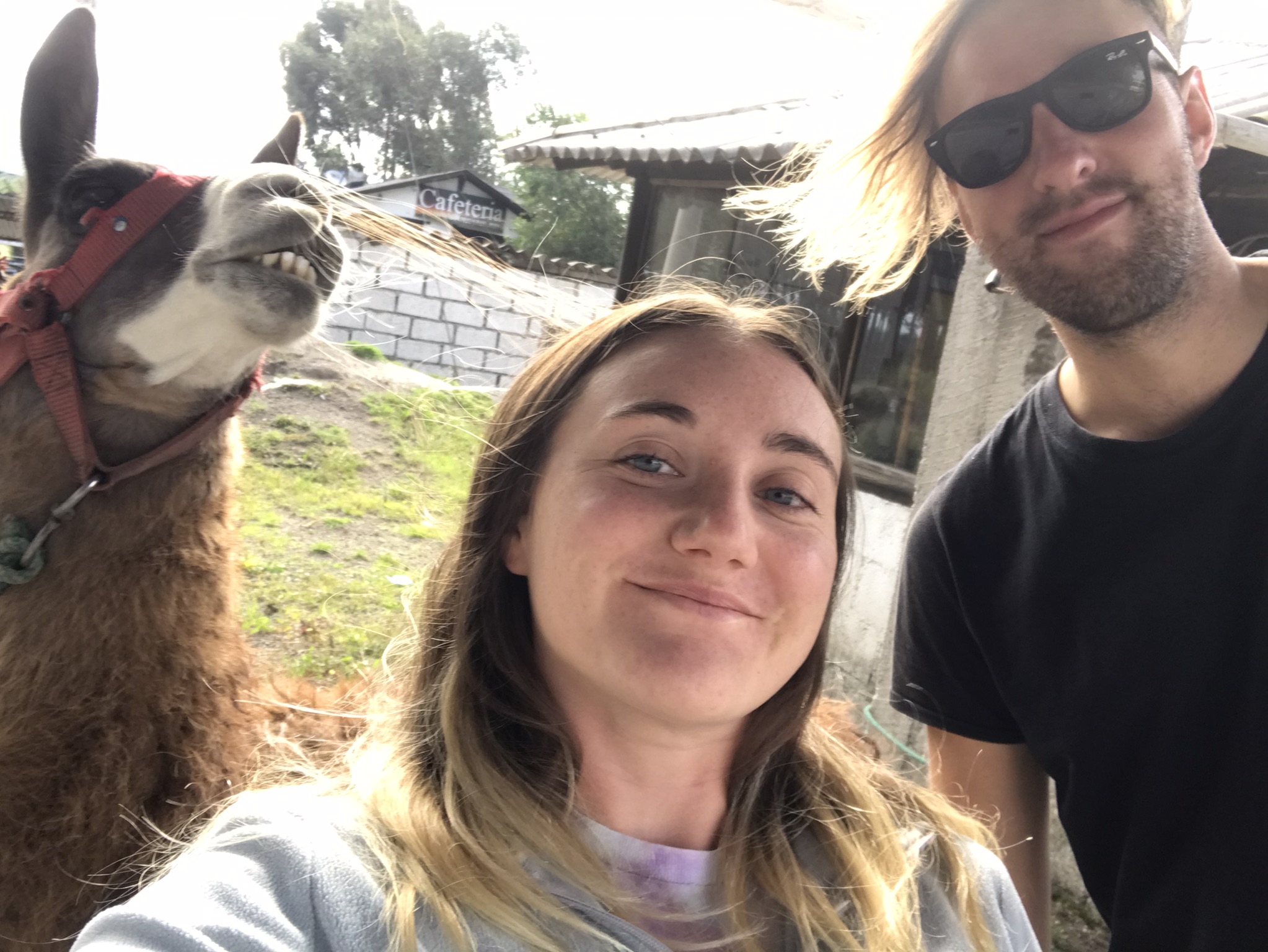We visited Cuba for almost a week en route to Bogota. Cuba is a country with a unique history, leading to many challenges which persist to the present day. There are many aspects of Cuba travel that are not straightforward. We had planned to see more of Cuba, but due to a powerful storm that destroyed infrastructure just a couple of weeks before our visit, our time in Cuba was limited to Havana and the surrounding areas.
Things you should know
Visiting Cuba can be a logistical minefield for a variety of reasons, most of which are a result of the US trade embargo or the policies of the communist government. If you are from a country which qualifies for the USA’s ESTA visa waiver system, then as of January 2021 traveling to Cuba will mean that you will no longer be eligible for the visa waiver and will need to apply for a full visa if you want to travel to the USA.
Internet access: to access the internet you need to jump through some annoying hoops. You have to buy a scratch card in order to use the public wifi, the scratchcard has a password for the wifi which works for a limited time only. We ended up buying a scratchcard for a very high price from a jinetero (street hustler) but I don’t recommend this. There are only certain public spaces where you can access the public wifi such as parks and bars, however we found that the wifi didn’t work anywhere other than La Floridita bar. We mostly managed without wifi but needed it in order to complete the immigration forms for Colombia – pretty stressful and difficult to navigate though as we needed to keep ordering daiquiris in La Floridita to stay in the bar and use the wifi! I ended up messing the form up and declaring that I was arriving in Colombia by private jet, thankfully nobody at the airport questioned this.
All accommodation in Cuba is regulated by the government, American companies such as Airbnb do not work for the most part. Other than large hotels, the most common form of accommodation is a casa particular, basically a family home turned BnB. We were able to book our casa particular via hostelworld, however most of these aren’t available online due to connection/wifi issues. We found it very rewarding to stay in a Cuban family home as it provides business directly to locals whilst avoiding personality-devoid hotel chains. Most of these casa particulares are in old, historic houses so the experience is very authentic, our host was lovely and is was great to engage with her and her family to get a better experience of the everyday lives of Cuba people.
I highly recommend pre-arranging your transport from the airport to your casa particular either by using booking.com transfer section or speaking to your accommodation provider before you arrive. You don’t want to get caught out at the airport by the shouting taxi-men with no way to get to Havana.
Why are the buildings in Havana so decrepit? Well, when everything was nationalized after the communist takeover in the 1950s. Huge mansions, owned by wealthy capitalists or even American businessmen, were given to the local people after capitalists fled during the revolution, meaning that the serving class actually became the owners of these big houses. They didn’t have the money to maintain these expensive residences, therefore they fell into ruin. The only exception is Havana’s old town which is a UNESCO world heritage site, all these residencies have been renovated using money from UNESCO with the purpose of becoming a tourist attraction. All renovation in the old town has been completed without the residents having to contribute, it’s great for some but not all of Havana’s inhabitants. Rents are high and most houses have 3 generations living under one roof. To get some privacy, courting couples rent out a room in a casa particular for an hour or so to be alone (wink wink). The sign for these ‘local’ casa particulares is slightly different from a regular casa particular open to international visitors.
Be aware that electricity cuts are super common in Cuba; residents often know which streets the electricity is going to be cut off and at what time. We had to sleep for a couple of nights with no fan due to the cuts, which in the sweltering heat wasn’t pleasant. We felt totally safe walking through the unlit, unpaved streets during these power cuts even in complete darkness with only a phone torch. It’s the reality of life here, unfortunately, power cuts are so regular that people aren’t bothered by them in the slightest.
We noticed that there were lots of long queues outside of shops. We were told that this was because of supply issues and that people were queuing most likely because they’d heard that that particular shop had just received a shipment of a certain product such as oil or nappies. People often make a business of queuing, buying the products and then reselling them for profit, pretty ironic for a communist state opposed to capitalism. Cuba really struggles to get essential products due to the US embargo. The US, Cuba’s largest and closest neighbour has maintained a trade embargo for years, putting Cuba and its people at an economic disadvantage. We were told medical supplies were often low, even though Cuba is recognised as having some of the world’s best doctors. Public servants (i.e. doctors) can earn significantly more money in the tourist industry rather than working as a doctor, we heard stories of doctors becoming taxi drivers instead of practicing medicine. Public salaries are low when compared with private business.
Another thing you will notice immediately is the herds of men in the street shouting ‘cambio’ or ‘euros’. Cubans need foreign currency such as Euros rather than Cuban peso as Euros can be used to buy ‘luxury’ items not available in the regular government shops (where ration cards are used). The problem is that no bank will change the Cuban peso to Euros, therefore tourists are the only source of foreign currency for the Cuban people. If visiting, you will undoubtedly be hassled by people trying to swap pesos for Euros. We quickly discovered that there was an official exchange rate for Euros and a black market exchange rate that was drastically higher. We made the mistake of changing some of our euros for Cuban peso at the official exchange rate, only to find that the restaurant we went to accepted Euros or peso at the black market rate, meaning we paid almost double in peso. It’s a real minefield! Most restaurants will accept Euros, however you need to make sure their exchange rate is good and NOT the official exchange rate. I really recommend bringing Euros instead of any other currency, definitely DO NOT bring US dollars.
Havana
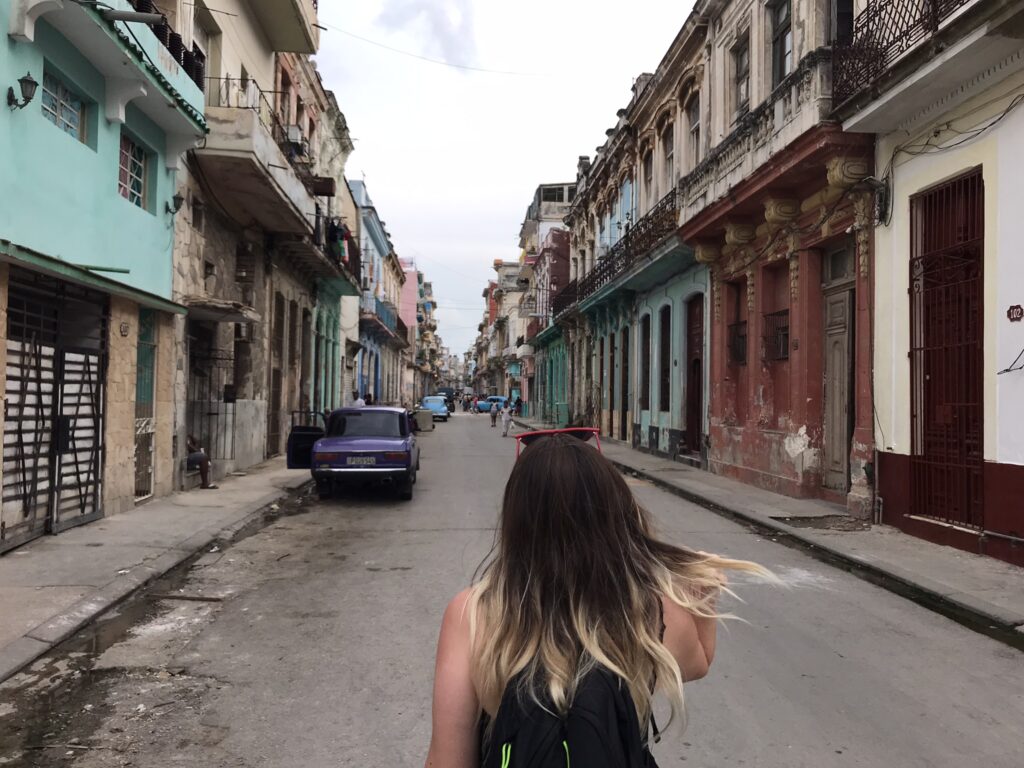
Havana for me was a place of decrepit, crumbling decadent mansions alongside shiny American hot rods rumbling down the malecon, with children playing in the rubble and music everywhere, literally everywhere, in the streets, in bars and restaurants and blaring in people’s houses. There were no pavements or sidewalks, the frequent electricity cuts left streets draped in darkness but you felt safe stumbling around in the depths of night. A place where people were friendly and welcoming despite the economic problems. They didn’t hate Americans anymore than Americans hate Cubans. Hate was a relic of the past, ironically matching the forlorn mansions.
Activities
- City walking tour of the Old and New town booked through Guruwalk. There are many free walking tours in Havana which provide essential context, I highly recommend doing tours of both the Old town, which covers more of Cuba’s colonial history, and the New town, which covers more of the modern history and current life in Havana.
- China town – we walked through China town on the walking tour, apparently there’s almost no authentic Chinese food there!
- Granma Memorial – we couldn’t stop giggling at the name of the yacht – the idea that the revolutionaries used ‘Grandma’ to launch the revolution was quite funny. Granma is now the most revered boat in Cuba and a national monument. This is a small memorial next to the Museum of the Revolution where you can see the original boat used by Castro, as well as other items such as Castro’s car and various revolutionary tanks and weapons.
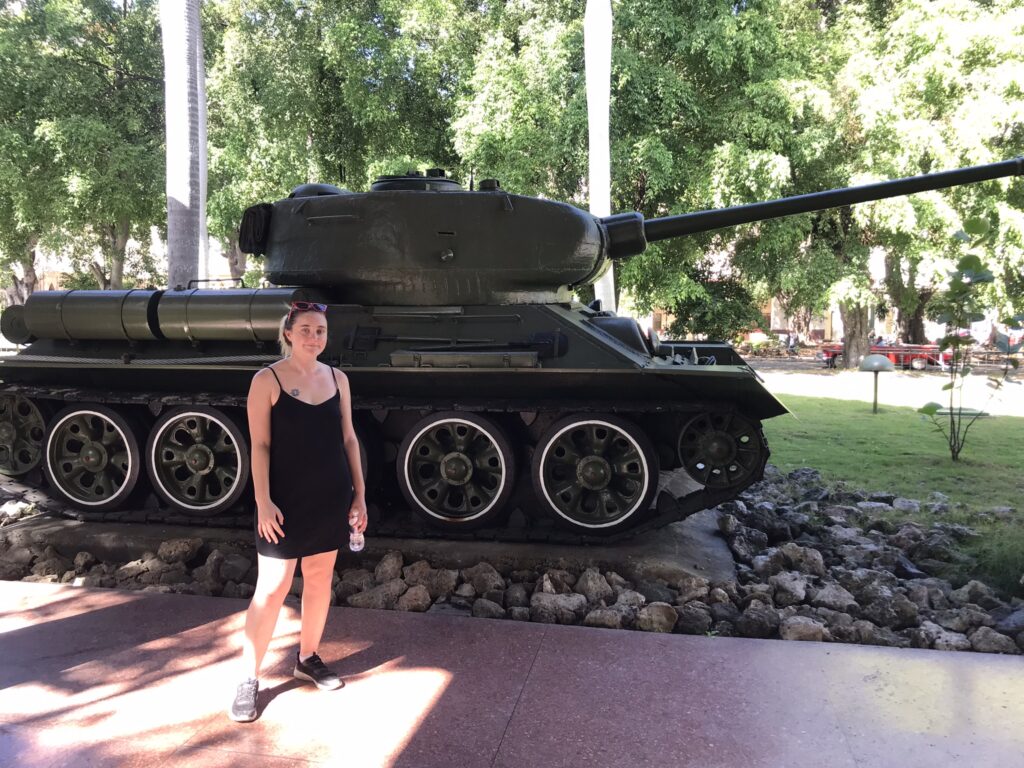
Can’t resist a photo op with a revolutionary tank
- Malecon – perfect place to catch the sunset, we particularly loved watching the fishermen casting their line.
- Castillo De Los Tres Reyes Del Morro – we took the public ferry across the bay from the ferry terminal near Old Havana (marked as Terminal de Ferris on google maps). The ferry to Casa Blanca cost less than £1 in Cuban Peso. The boat arrives in the small settlement of Casa Blanca, which is not the best place, however you are able to take a short walk up the hill to reach the Cristo Rey with great views over the bay. From there you can walk to the Castillo, the route takes you past Che Guevara’s house and the ‘Military History Museum’ which is actually a field near an army base which features some replica missiles from the Cuba Missile Crisis and plaques. Eventually you will reach the Castillo. Entry can only be paid in Cuban peso so make sure to bring enough, we did not and so had to change euros to peso with a helpful taxi driver outside. The castle has views over the bay and a small museum inside too, at night I believe there is historical recreation involving firing of cannons but I can’t confirm as we needed to leave in time to get the boat back across to Old Havana. The bus to Playa del Este actually stops near the castle so if you’re short on time and don’t want to explore the surrounding area I recommend this option.
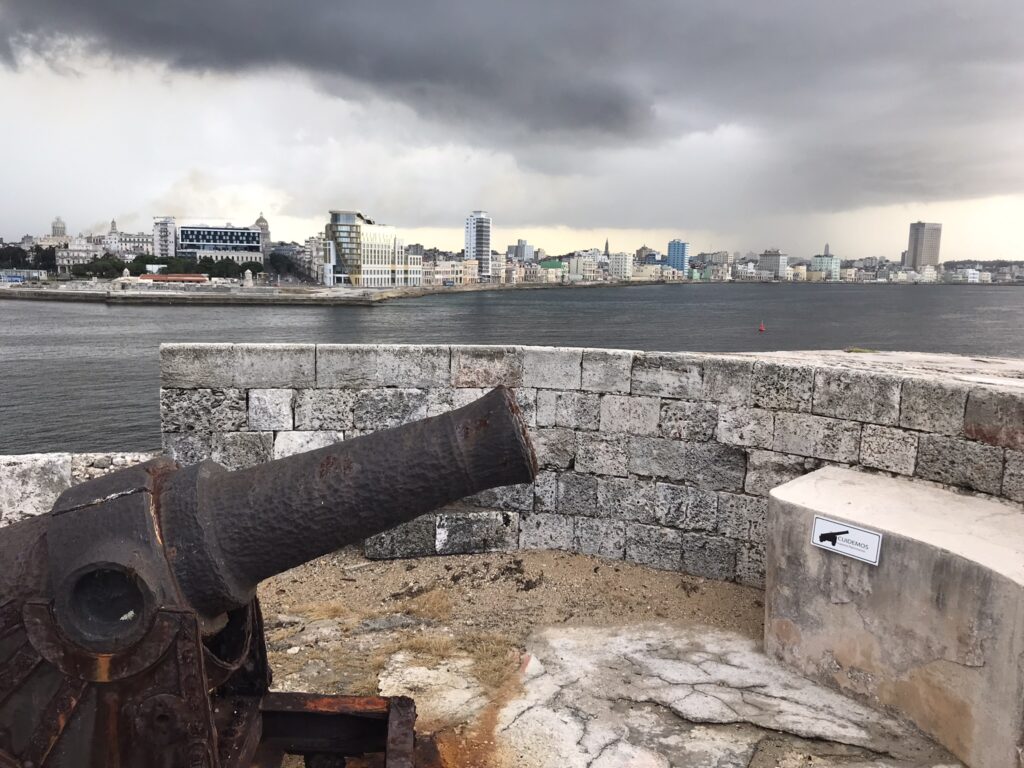
Stunning stormy views from the fort
- Playas del Este – we got the bus from Havana (google maps: TurBus stop to Playas del Este, opposite Hotel Inglaterra) to Playa del Este without any issues, before you plan on catching the bus head to the bus stop and study the bus times, this is the only way to get accurate bus times, the internet is almost useless here! I highly recommend trying the coconut with rum for that authentic Cuban beach experience, keep your ears peeled for the iconic ‘coco’ call of the beach hawkers.
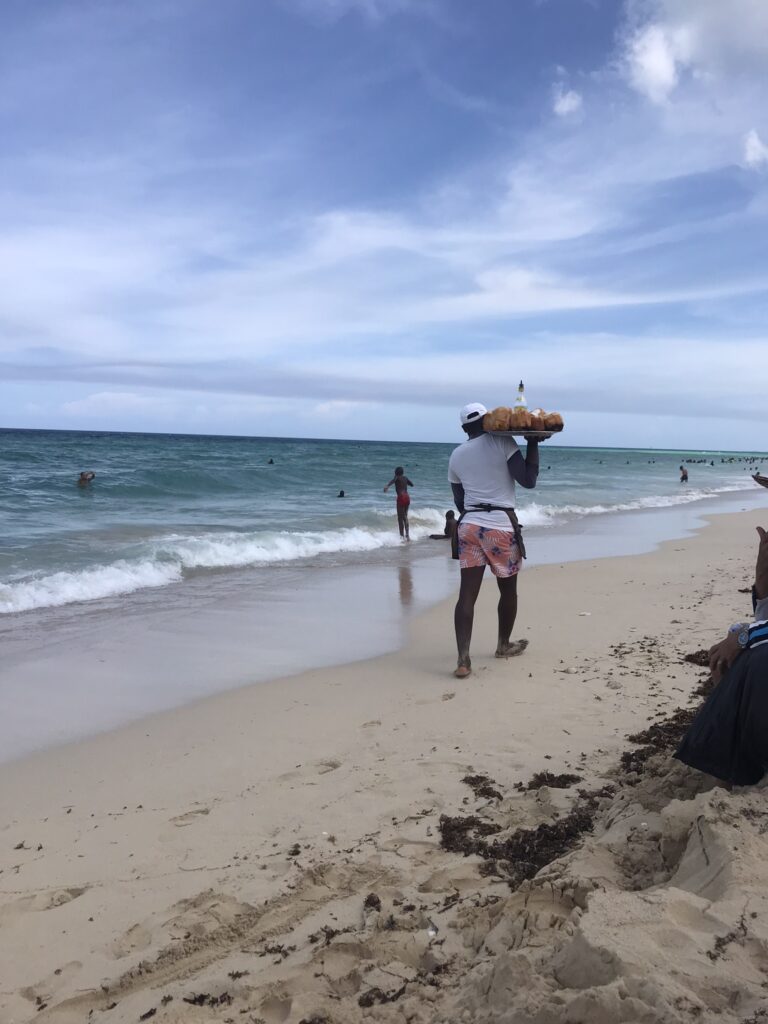
Our favourite beach hawker, the ‘coco’ man.
- Necrópolis Cristóbal Colón – a great introduction to a colonial Catholic cemetery, it is huge with a vast array of different grave marker styles and designs. We got a pamphlet from the guards at the entrance which explained some of the larger mausoleums and monuments. It was possible to walk to the cemetery from Old Havana, the walk took less than an hour through some lesser-visited areas.
- Revolution Square – a must see when visiting Havana, the square has some large monuments and imagery of Fidel Castro and Che Guevara. This is on the way to the Cristobal Colon cemetery so we combined the two while walking.
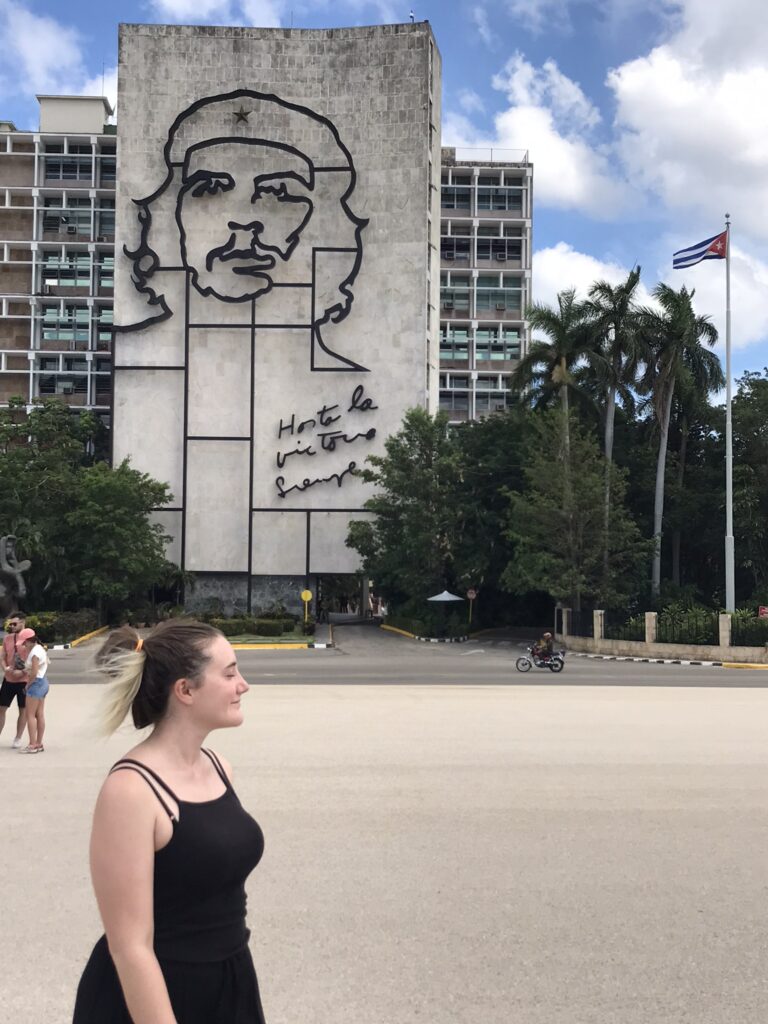
Admiring the man, the revolutionary and martyr himself, Che Guevara.
- Museum of the City – please be aware that the staff here will offer to take your photo but want money in exchange, we didn’t know this and it led to an awkward interaction and some weird photos to add to our archive.
- We admired the classic American cars driving along the seafront. Guys offer tours in these cars, if you want to be cliché and pretend you’re Grace Kelly in the movie To Catch A Thief you can arrange a classic car ride from Parque Centro.
Foodie places
- Jacqueline Fumero Cafe & Boutique – really close to where the free walking tour group meets.
- Restaurante La Concordia – great rooftop restaurant and bar.
- La Floridita – for daiquiris only, this is a historic bar that was frequented by Ernest Hemingway and is the best place to sample the famous cocktails. This is far more upmarket and expensive place, and is the only place that we found working wifi in Havana!
- Acuñando El Paladar – fancy fine-dining experience.
